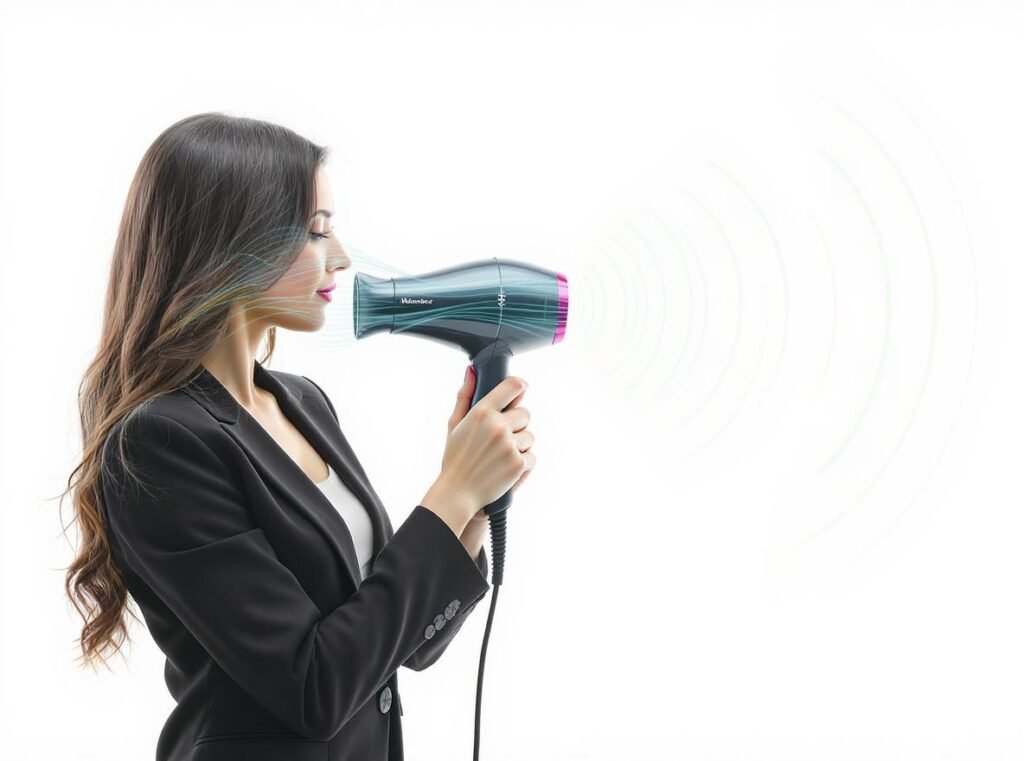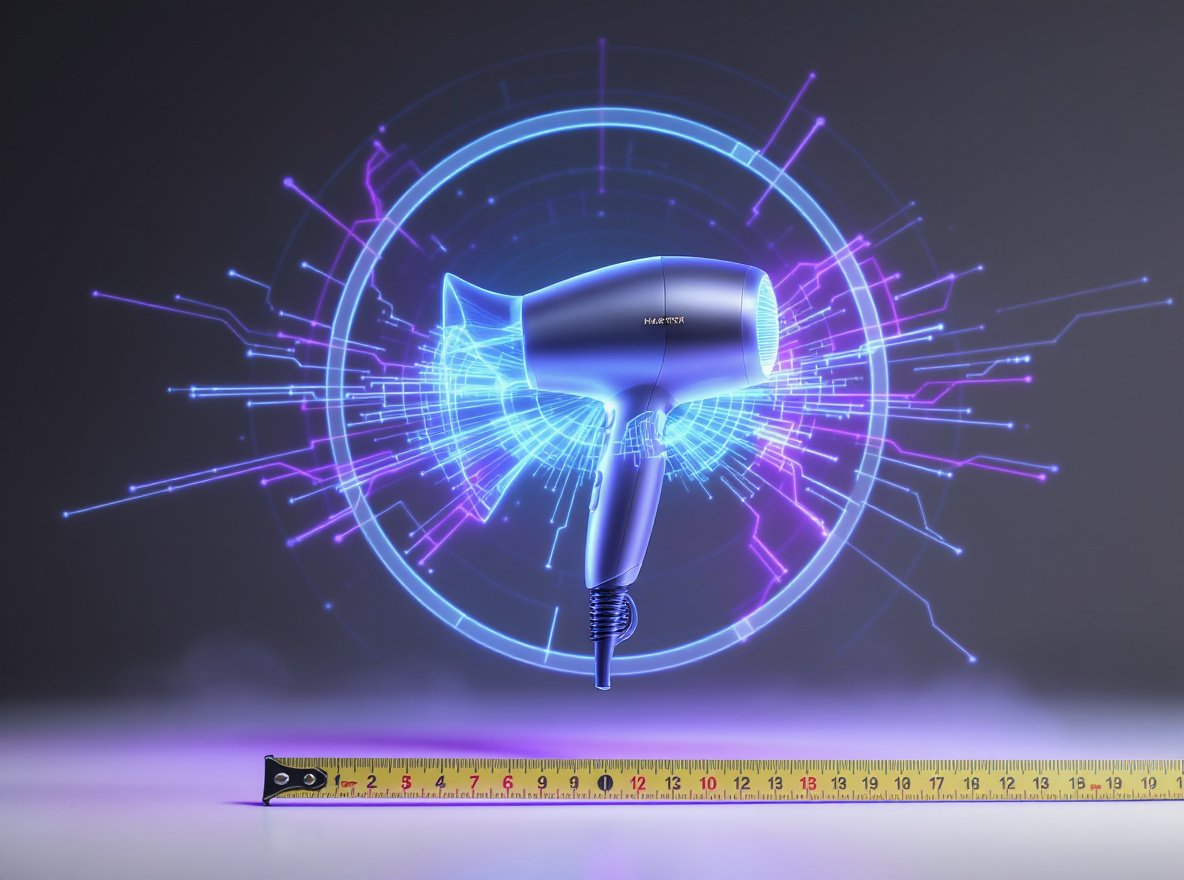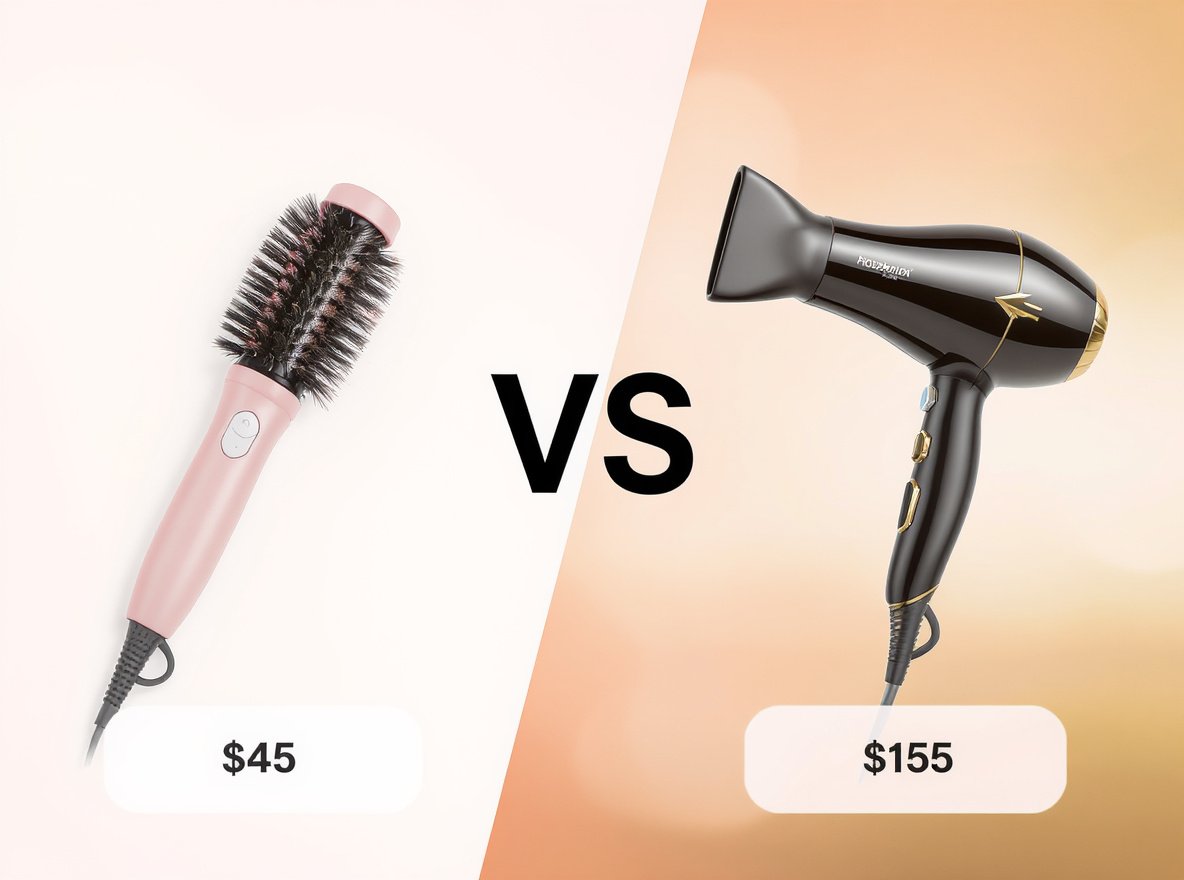We understand your concern about hair dryer safety and potential health risks. This worry is completely natural given the widespread use of these devices in our daily routines. Let’s examine the scientific evidence and provide you with clear, factual answers about hair dryers and radiation exposure.
Hair dryers emit extremely low frequency electromagnetic fields (ELF-EMF) that are non-ionizing radiation. While they can produce magnetic fields up to 20,000 milligauss at close range, major health organizations have not established a definitive cancer risk from typical hair dryer use.
If you’re still concerned about EMF exposure and safety measures, keep reading to learn about radiation levels, health organization positions, and how to choose the safest hair dryers for your business.
Table of Contents
ToggleWhat Type of Radiation Do Hair Dryers Actually Emit?
Understanding the specific type of radiation hair dryers produce helps separate fact from fear when evaluating health concerns.
Hair dryers emit magnetic field radiation in the extremely low frequency (ELF) spectrum (0-300 Hz), which is non-ionizing radiation that lacks sufficient energy to directly damage DNA like ionizing radiation such as X-rays.
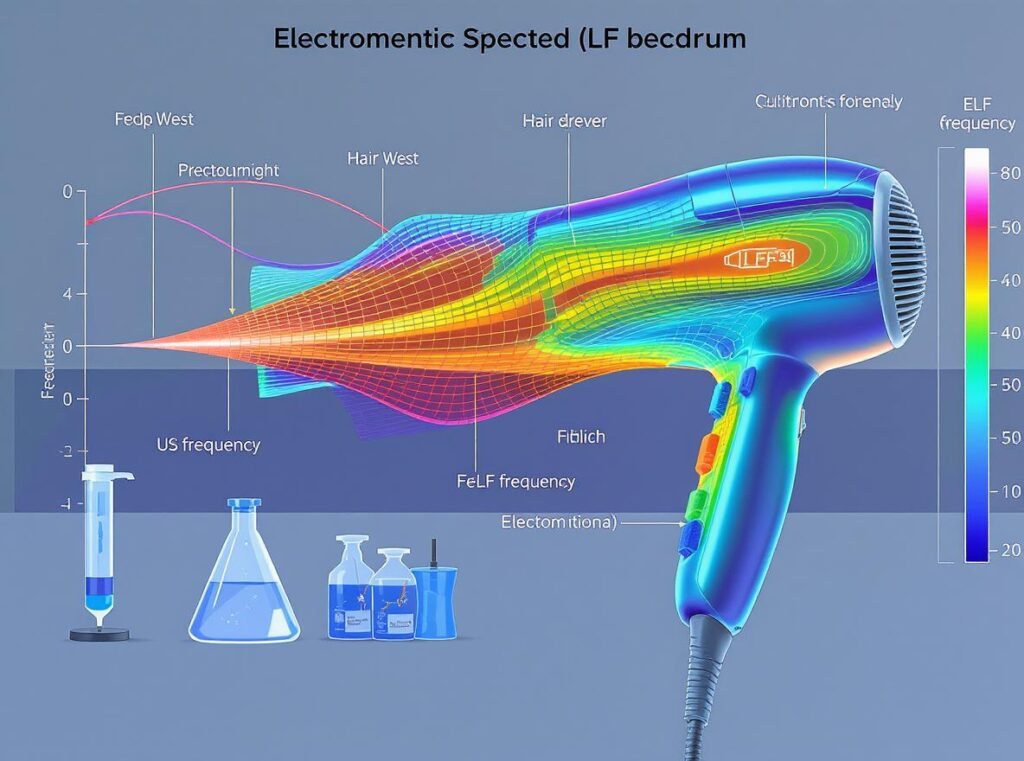
Hair dryers generate electromagnetic fields through their electrical components – primarily the motor and heating elements. Research shows these devices emit a mean magnetic flux density of 0.35 µT (equivalent to 3.5 milligauss) during typical use, but can reach up to 20,000 milligauss within 4 inches of the device.
The key distinction lies in radiation types:
• Non-ionizing ELF-EMF: Low-energy waves that cannot break molecular bonds or damage DNA directly
• Ionizing radiation: High-energy waves (like X-rays) that can damage cells and potentially cause cancer
• Frequency range: Hair dryers operate in the 0-300 Hz spectrum, far below radiofrequency ranges
However, it’s important to note that hair dryers may contain chemicals like phthalates that trigger California Proposition 65 cancer or reproductive harm warnings, though this relates to chemical exposure rather than radiation.
For wholesale buyers, understanding this technical distinction helps address customer concerns while providing accurate safety information.
Do Health Organizations Consider Hair Dryers Dangerous?
Professional health organizations provide measured guidance on hair dryer safety, though their positions reveal ongoing uncertainty about EMF effects.
Major health organizations highlight risks but lack consensus on EMF hazards. OSHA states there is “no consensus on health hazards” from EMF exposure, while the CPSC focuses primarily on electrocution risks near water rather than radiation concerns.

The regulatory landscape shows nuanced positions:
| Organization | Primary Concern | Official Position |
|---|---|---|
| OSHA | EMF exposure limits | No established exposure limits, citing “no consensus on health hazards” |
| CPSC | Electrocution risks | Warns of electrocution near water; no specific EMF classification |
| California Prop 65 | Chemical exposure | Requires warnings for chemicals, not radiation |
The Consumer Product Safety Commission emphasizes that electrocution near water remains the primary documented hazard, with multiple safety regulations focusing on Ground Fault Circuit Interrupter (GFCI) protection rather than EMF emissions.
OSHA’s measured approach reflects the current state of scientific understanding, acknowledging that while EMF exposure occurs, definitive health hazards have not been established for typical consumer use patterns.
How Do Hair Dryer EMF Levels Compare to Other Appliances?
Putting hair dryer radiation into perspective requires comparing EMF emissions across common household devices, revealing some concerning differences.
Hair dryers emit significantly higher EMF levels than many household devices at close range, with measurements showing 60-20,000 milligauss within 4 inches, which exceeds the EPA’s recommended limit of 0.5-2.5 milligauss.
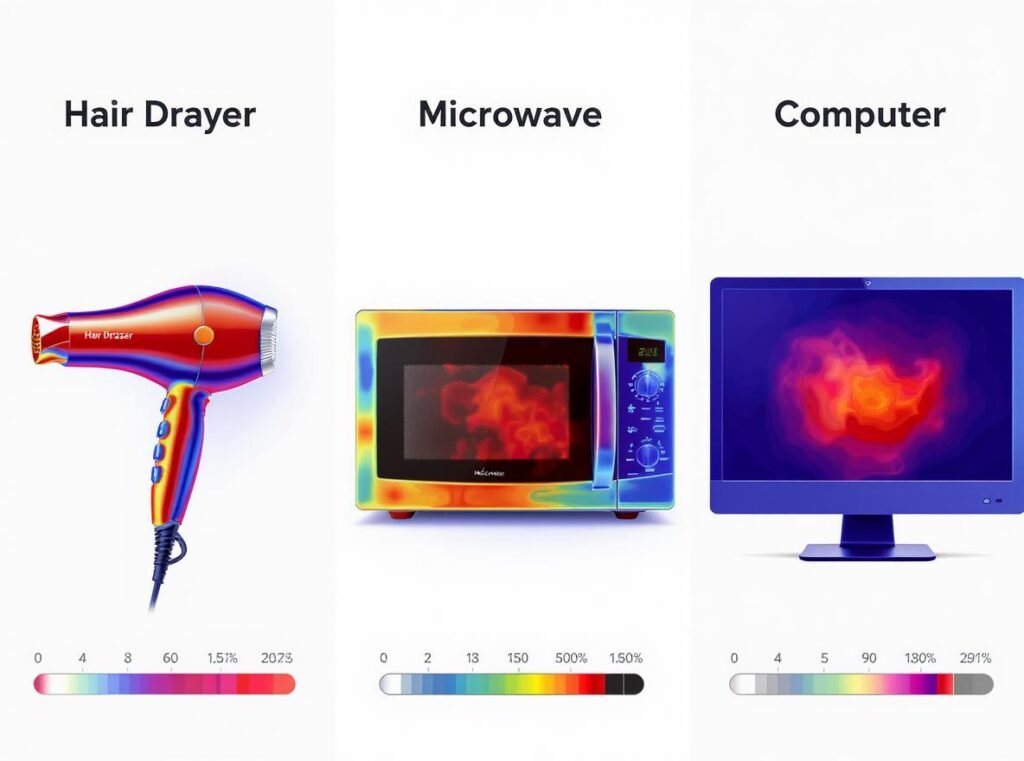
EMF comparison across common appliances:
| Appliance | Typical EMF (milligauss) | Distance | Duration |
|---|---|---|---|
| Hair dryer | 60-20,000 | 4 inches | 5-15 minutes |
| Microwave oven | 100-500 | 1 foot | Variable |
| Computer screen | 1-30 | 1 foot | Hours |
| Electric shaver | Similar to hair dryer | Close contact | 2-5 minutes |
The key safety factor is that EMF strength drops rapidly with distance. However, the close proximity required for hair dryer use creates higher exposure scenarios than most other household appliances.
Duration matters significantly in exposure calculations. While hair dryers may produce relatively high EMF levels, typical usage involves only 5-15 minutes of exposure compared to hours of exposure from devices like computers or electric blankets.
What Factors Affect Hair Dryer Radiation Exposure?
Several controllable factors influence your EMF exposure when using hair dryers, giving users and businesses practical ways to minimize risk.
Distance from the device, usage duration, power settings, and hair dryer age/model all significantly impact EMF exposure levels, with distance being the most crucial factor for exposure reduction.
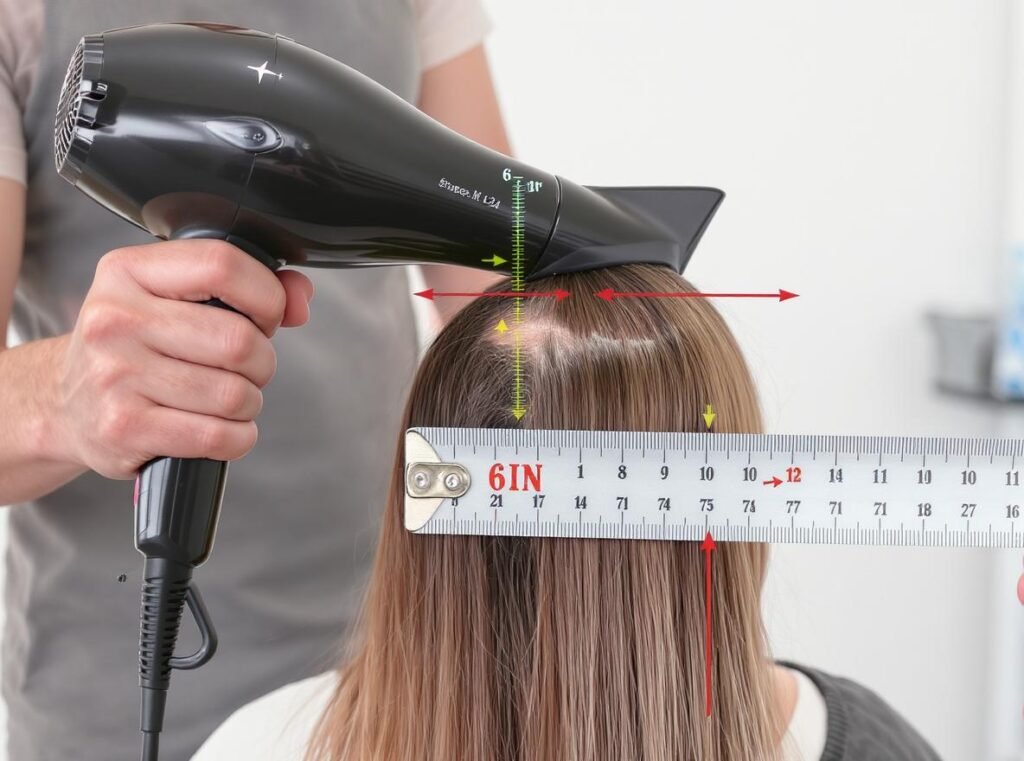
Research confirms that EMF strength drops rapidly when holding the dryer more than 6 inches away from the head, making distance management the most effective exposure reduction strategy.
Key exposure factors include:
Technical Variables
- Model age and design (older models typically emit more EMF)
- Motor efficiency and power consumption
- Internal shielding quality and materials
- Heat setting and fan speed selections
Usage Patterns
- Holding distance from scalp and body
- Total drying time per session
- Frequency of weekly use
- Professional vs. consumer usage patterns
Best Practices for Exposure Reduction
- Maintain 6+ inches distance when possible
- Limit sessions to under 10 minutes
- Use lower heat/speed settings when effective
- Choose modern models with better EMF management
| Risk Level | Distance | Duration | Recommended For |
|---|---|---|---|
| Higher | <4 inches | >10 minutes | Avoid when possible |
| Moderate | 4-6 inches | 5-10 minutes | Occasional use |
| Lower | >6 inches | <5 minutes | Regular use acceptable |
For businesses, educating customers about these controllable factors adds value while addressing legitimate safety concerns.
Are There Safer Hair Dryer Technologies Available?
Modern hair dryer technology offers specific options designed to reduce EMF emissions while maintaining or improving drying performance.
Infrared hair dryers represent the safest current technology, reducing radiation exposure by using lower heat and faster drying times, while emitting less radiant heat than traditional models.
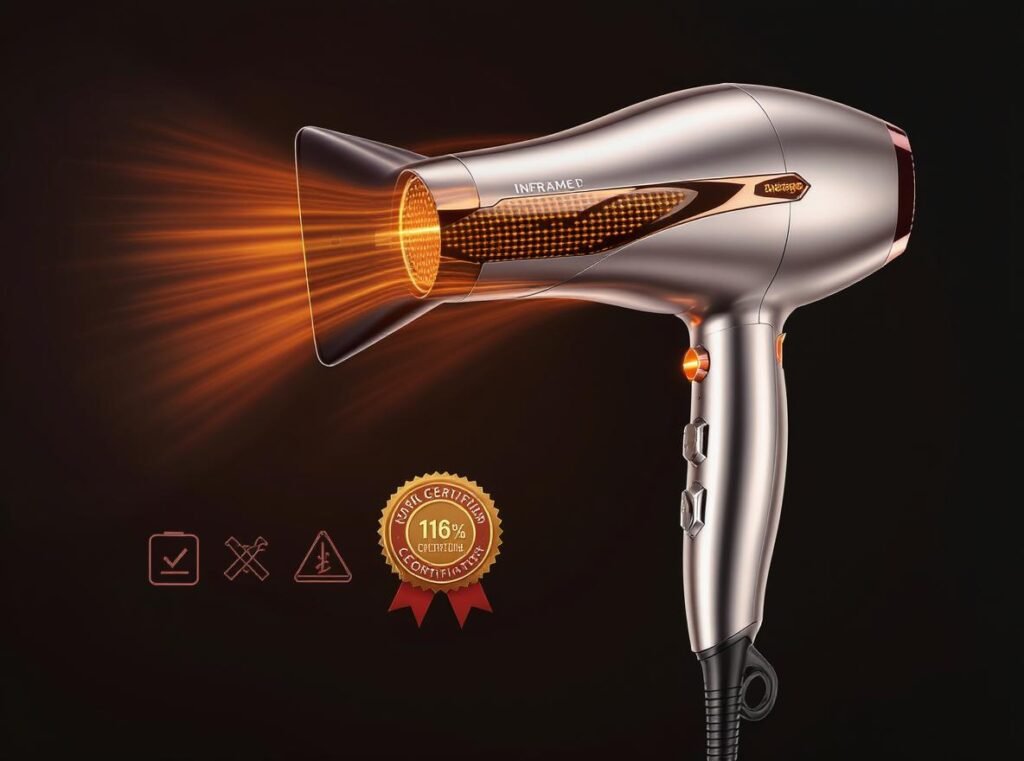
Advanced safety technologies focus on different approaches:
Infrared Technology Benefits
- Lower heat requirements reduce overall EMF emissions
- Faster drying times minimize exposure duration
- Less radiant heat generation
- More efficient energy transfer to hair
Traditional Technology Limitations
- Ionic and ceramic technologies focus on hair health rather than radiation reduction
- Higher wattage models typically produce more EMF
- Older designs lack modern shielding improvements
- Less efficient heat transfer requires longer usage times
Professional vs. Consumer Options
- Commercial-grade models often include better EMF shielding
- Low-EMF specialty models available for safety-conscious markets
- Vintage dryers may contain asbestos and should be avoided entirely
- Modern safety certifications include EMF considerations
For wholesale buyers, offering infrared and low-EMF options caters to safety-conscious market segments while providing competitive advantages through superior technology.
What Do Recent Scientific Studies Say About Hair Dryers and Cancer?
Current scientific research provides important context for understanding potential long-term health effects, though results remain mixed and inconclusive.
Recent studies show mixed results with no definitive cancer link. A 2020 rat study found reduced sperm motility from hair dryer EMF, while a 2025 human study showed weak evidence for tumor risk with small sample sizes and no clear dose-response pattern.

The scientific community approaches this topic with appropriate caution given the complexity of EMF research:
Animal Studies
- 2020 research on rats showed hair dryer EMF reduced sperm motility
- No direct cancer development observed in controlled animal studies
- Results suggest potential reproductive effects requiring further investigation
- Animal studies may not directly translate to human health outcomes
Human Population Studies
- 2025 study found weak evidence for glioma risk (OR: 1.7)
- Small sample sizes limit statistical significance
- No clear dose-response relationship established
- Confounding factors make definitive conclusions difficult
Meta-Analysis Results
- ELF-EMF from appliances shows “below unity risk” for most tumor types
- Multiple studies required for reliable population-level conclusions
- Occupational exposure studies (salon workers) show mixed results
- Long-term epidemiological data still developing
Current evidence suggests that normal consumer use poses minimal established risk, but the scientific community maintains vigilance as research methodology improves and longer-term data becomes available.
How Can Businesses Address Customer Safety Concerns?
Professional hair dryer retailers and wholesalers can proactively address customer concerns while building trust through transparent communication and product differentiation.
Transparent communication about actual EMF levels, safety certifications, and proper usage guidelines helps businesses build customer confidence while promoting responsible product use and regulatory compliance.

Successful business approaches include:
Educational Content Strategy
- Provide factual EMF measurement data in milligauss units
- Explain the difference between ionizing and non-ionizing radiation
- Compare hair dryer EMF levels with other household appliances
- Offer proper usage technique demonstrations and guidelines
Product Differentiation Opportunities
- Highlight infrared and low-EMF model availability
- Emphasize modern safety certifications and testing standards
- Provide detailed technical specifications for EMF-conscious customers
- Stock both standard and premium safety-focused options
Professional Service Excellence
- Train staff to address safety questions with scientific accuracy
- Provide written safety guidelines and usage recommendations
- Maintain updated information based on latest research developments
- Offer technical support for optimal usage techniques
Regulatory Compliance
- Ensure all products meet CPSC safety standards
- Provide clear California Prop 65 warnings where required
- Maintain proper documentation for EMF testing and certifications
- Stay current with evolving safety regulations and industry standards
For distributors like Conason, this represents an opportunity to differentiate through superior customer education and product transparency. Consider exploring our P1C high-speed hair dryer, which incorporates advanced technology for efficient drying with reduced exposure time.
What Safety Precautions Should Users Follow?
Practical safety guidelines help users minimize EMF exposure while maintaining effective hair drying results and avoiding other documented hazards.
Simple precautions like maintaining 6+ inches distance, limiting sessions to under 10 minutes, and never using near water can significantly reduce EMF exposure while preventing electrocution risks.
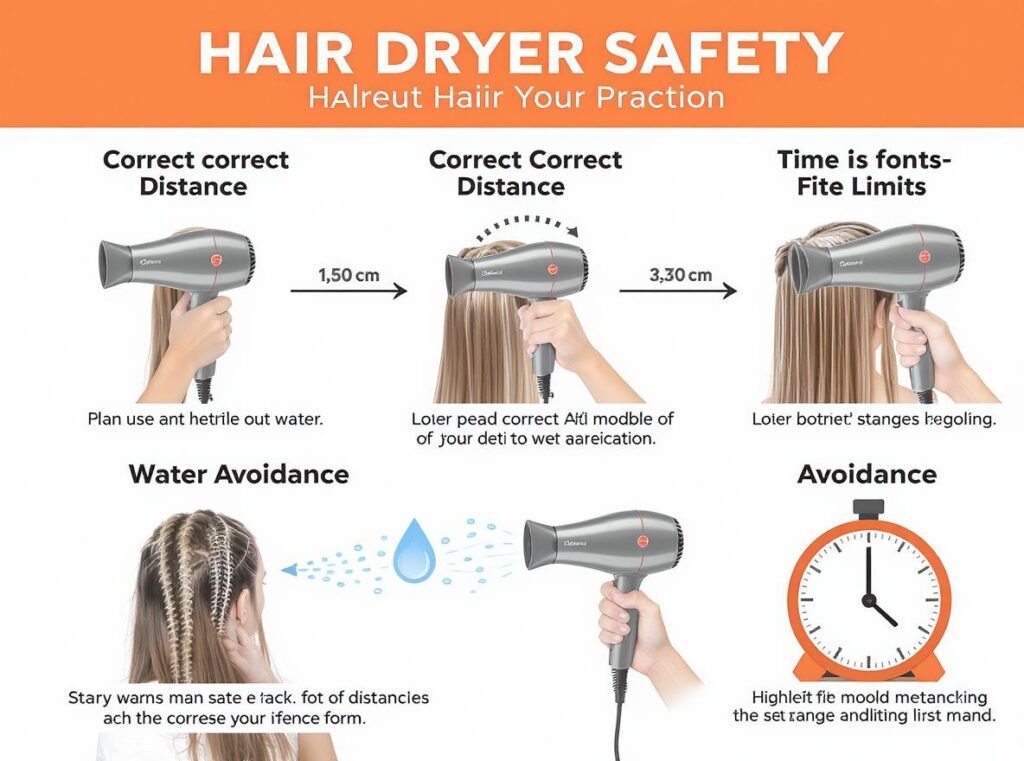
Essential safety practices based on current research:
Distance and Positioning
- Hold dryer 6+ inches from scalp when possible (EMF drops rapidly with distance)
- Use brushes or combs to maintain distance while styling
- Avoid pointing airflow directly at head for extended periods
- Move dryer continuously rather than focusing on one area
Time and Usage Management
- Limit drying sessions to under 10 minutes when possible
- Take breaks during longer styling sessions for professional use
- Towel-dry hair thoroughly before using electric dryer
- Consider air-drying for final styling touches
Equipment and Environment Safety
- Never use hair dryers near water to prevent electrocution
- Choose modern models with GFCI protection
- Avoid vintage dryers that may contain asbestos
- Wash hands after use if Prop 65 warnings apply to your model
Professional Environment Considerations
- Salon workers should prioritize low-EMF models for daily use
- Implement rotation schedules to minimize individual exposure
- Ensure proper ventilation for chemical exposure reduction
- Maintain equipment properly for optimal safety performance
| Safety Level | Precautions | EMF Reduction | Recommended For |
|---|---|---|---|
| Basic | 6+ inches distance, <10 minutes | Moderate | General consumers |
| Enhanced | Low-EMF models, limited sessions | Significant | Frequent users |
| Maximum | Infrared dryers, professional protocols | Maximum | Salon professionals |
Should Pregnant Women Avoid Hair Dryers?
Pregnancy raises additional concerns about EMF exposure, though scientific evidence remains limited regarding specific risks to fetal development.
While no direct evidence links hair dryers to pregnancy risks, California Prop 65 warnings about reproductive-harm chemicals and precautionary principles for EMF exposure lead many expectant mothers to minimize use or choose low-EMF alternatives.
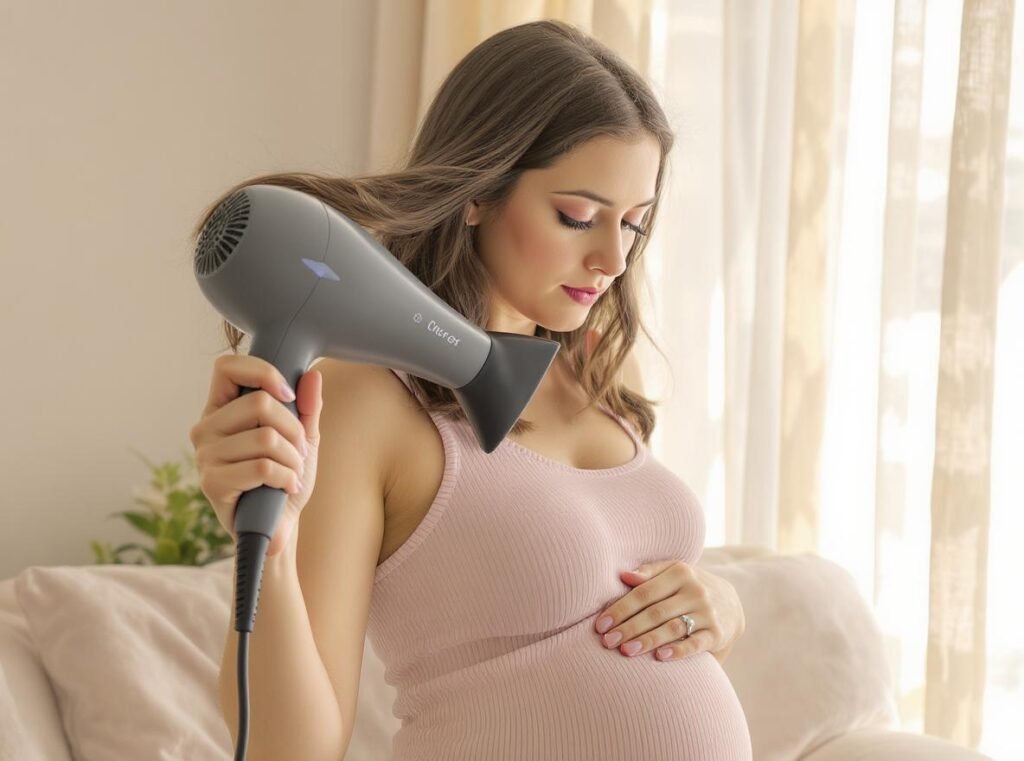
Pregnancy-specific considerations include:
Medical Perspective
- No established direct link between hair dryer EMF and birth defects
- General medical recommendation to minimize unnecessary EMF exposure during pregnancy
- Individual consultation with healthcare providers recommended for high-exposure situations
- Focus on overall lifestyle safety rather than single device concerns
Chemical Exposure Concerns
- California Prop 65 warnings indicate potential reproductive harm from chemicals
- Phthalates and other compounds may pose separate risks from EMF
- Proper ventilation important when using hair care products
- Hand washing recommended after use if warnings apply
Practical Alternatives and Modifications
- Increased towel drying and air drying when time permits
- Using lower power settings and maintaining greater distance
- Choosing infrared or low-EMF models if hair dryer use is necessary
- Reducing frequency of use during pregnancy as a precautionary measure
Professional Guidance Recommendations
- Consultation with obstetricians about specific exposure concerns
- Consideration of occupational exposure for salon workers
- Individual risk assessment based on personal health history
- Balance between practical daily needs and precautionary health measures
For businesses serving customers who may be pregnant, offering information about low-EMF options and proper usage techniques demonstrates care for customer wellbeing and family safety.
What’s the Bottom Line on Hair Dryer Safety?
Based on current scientific evidence, health organization guidance, and actual EMF measurements, we can provide clear recommendations for hair dryer use and safety.
Hair dryers pose no proven cancer risk from EMF emissions, but they do emit radiation exceeding safety guidelines at close range. Electrocution near water and chemical exposure remain the primary documented hazards, while simple precautions can further minimize already low EMF exposure.

Evidence-based safety assessment shows:
Established Facts
- EMF emissions can exceed EPA guidelines (0.5-2.5 milligauss) at close range
- No proven causal link between hair dryer EMF and cancer in humans
- Electrocution near water remains the primary documented safety risk
- Chemical exposure warnings (Prop 65) apply to some models independently of EMF
Risk Management Strategies
- Distance management provides the most effective EMF reduction
- Modern infrared models offer improved safety profiles
- Usage time limitation reduces cumulative exposure
- Proper electrical safety prevents serious injury or death
Business and Consumer Implications
- Transparent safety communication builds customer trust and regulatory compliance
- Technology improvements continue to lower EMF emissions in newer models
- Professional environments may require enhanced safety protocols
- Individual choice allows for additional precautionary measures based on personal risk tolerance
Future Considerations
- Ongoing research continues to monitor potential long-term effects
- Technology advances may further reduce EMF emissions
- Regulatory standards may evolve based on accumulating evidence
- Professional exposure guidelines may develop for salon environments
Summary
Hair dryers emit ELF-EMF radiation that can exceed safety guidelines at close range but have no established cancer link according to current research. Simple precautions like maintaining 6+ inches distance and limiting usage time can significantly reduce exposure. Modern infrared technology offers the safest options for EMF-conscious consumers.
For wholesale buyers seeking reliable, safe hair dryer products with transparent safety information, explore our complete product collection or contact us for detailed EMF specifications and safety certifications. Our team can help you select appropriate models for your market while providing customers with comprehensive safety guidance and documentation.

